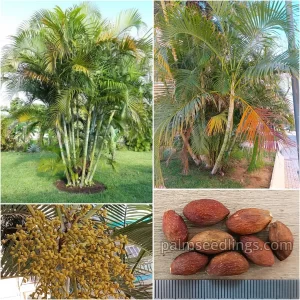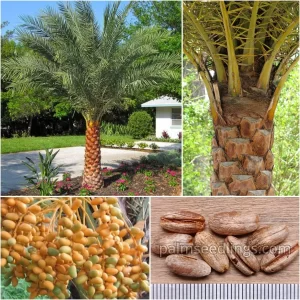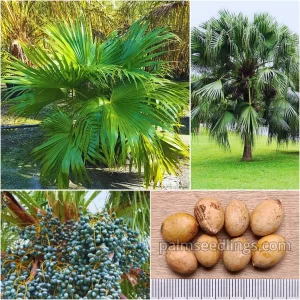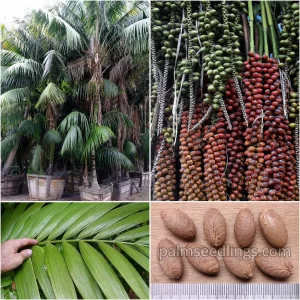Menu
3,00 € – 120,00 €
Product Details
Washingtonia filifera is a robust palm with a thick trunk, green fan-shaped leaves with white fibers, and clusters of small, dark fruits.
-Germination Time: Fast
-Germination Difficulty: Easy
-Growth speed: Fast
-Cold Hardiness: -10°C (14°F)
Select Quantity
*Shipping cost is calculated automatically in the cart after adding the products.
Washingtonia filifera, commonly known as the California fan palm or desert fan palm, is a robust, slow-growing palm with a thick, columnar trunk that can reach 15–20 meters (50–65 feet) in height and 0.6–1 meter (2–3 feet) in diameter. Its crown is filled with large, fan-shaped leaves measuring 1–2 meters (3–6 feet) across, with light green blades and long petioles that feature orange-brown fibers. The dead leaves often form a dense, shaggy “skirt” around the upper trunk, adding to its distinct appearance. It produces small white flowers in hanging clusters, followed by black, berry-like fruits.
Native to the desert oases of the southwestern United States and northwestern Mexico, this palm is highly drought-resistant and thrives in sandy, well-drained soils. It is more cold-hardy than its relative, Washingtonia robusta, tolerating temperatures down to -10°C (14°F). Additionally, it has good wind resistance, making it well-suited for arid climates and landscaping in areas prone to occasional frosts. This iconic palm is a symbol of desert landscapes and is valued for its resilience and dramatic form.
| Weight | N/A |
|---|---|
| Quantity | 10 Seeds, 100 Seeds, 1.000 Seeds, 10.000 Seeds |




All rights reserved PalmseedlingsⓇ 2025.